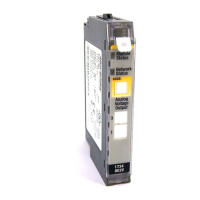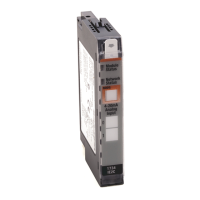Rockwell Automation Publication 1734-UM001E-EN-P - July 2013
Chapter
5
Calibrate Your Analog Modules
About This Chapter
Read this chapter for information about how to calibrate analog modules. Your
analog I/O module is factory-calibrated. You may choose to recalibrate your
module in your system to increase its accuracy for your specific application. This
chapter covers the following:
• Tools required to calibrate analog modules
• Calibrate analog current input modules
• Calibrate analog current output modules
• Calibrate analog voltage input modules
• Calibrate analog voltage output modules
You do not have to configure a module before you calibrate it. If you decide to
calibrate your analog I/O modules first, you can configure it at the same time.
When you calibrate input modules, use current or voltage calibrators to send a
signal to the module to calibrate it.
When you calibrate output modules, use a digital multimeter (DMM) to
measure the signal the module is sending out.
Analog I/O modules can be calibrated on a channel by
channel basis or with the channels grouped together.
Regardless of which option you choose, we recommend
you calibrate all channels on your module each time you
calibrate. This helps you maintain consistent calibration
readings and improve module accuracy.
Calibration is meant to correct any hardware inaccuracies
that may be present on a particular channel or in your
system. The calibration procedure compares a known
standard, either input signal or recorded output, with the
channel’s performance and then calculates a linear-
correction factor between the measured and the ideal.
The linear-calibration correction factor is applied on every
input or output in the same manner to obtain maximum
accuracy.

